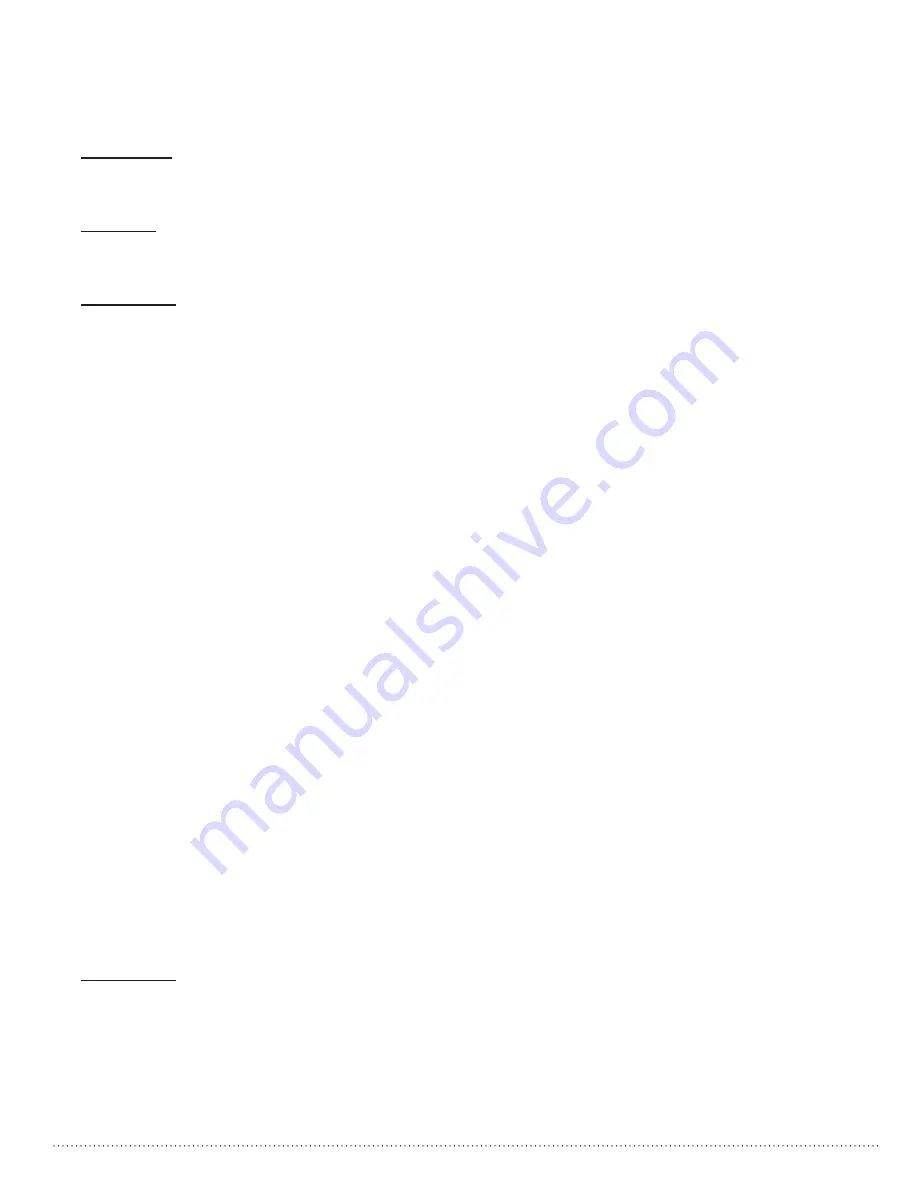
10
It is recommended to winterize whenever the recreational vehicle is placed in storage or below freezing weather
is expected. When the plumbing system is purged with compressed air, antifreeze is not necessary except a small
amount to protect P traps and termination valves from freezing. If using FDA approved antifreeze to winterize the
plumbing system, several gallons may be required to fill the water lines.
CAUTION:
Appliances must also be winterized. Refer to their respective OEM manual for proper winterization
instructions.
POISON:
ONLY non-toxic FDA approved RV antifreeze can be used to winterize the fresh water system in the
recreational vehicle. Automotive antifreeze, if ingested, can cause blindness, deafness or death.
WARNING:
It is recommended that a qualified RV service technician familiar with recreational vehicles, such as
an authorized dealer, perform the winterizing procedure.
Using Air Pressure
To use air pressure to winterize the motorhome access to an air compressor and an adapter to connect the air line
to the water system is needed. Adapters can be found at any RV supply store. When hooked to the water lines the
pressure should not exceed 40 psi. Higher pressure can damage the lines.
1. Drain the fresh water tank by opening the tank drain valve.
2. Drain the low point drain valves.
3. Let all the water drain.
4. Turn the water pump on and allow it to run so all the water is cleared out of the water pump and water
tank. Turn the water pump off. Close the fresh water tank shut off valve.
5. Remove water heater drain plug and open pressure relief valve.
6. After the water is drained, hook an air hose to the City/Fresh Water fill connection and turn the air on. Do
not exceed 40 psi in the water lines and faucets.
7. When no further water can be seen coming out of the drains, move water heater bypass valve to BYPASS
setting. Replace the water heater drain plug and close the pressure relief valve.
8. Open all faucets, including one at a time to clear water from the faucet supply lines. Do not forget to
drain the shower.
9. Flush toilet until the water stops running.
10. Shut off air and unhook the air hose.
11. One gallon of RV antifreeze is needed to protect the water drain lines. Pour 1 pint into both the kitchen
and bath shower drains. Pour 2 pints into the bath sink drain, with some of the antifreeze going into grey
tank to protect the drain valve. Open the toilet bowl valve, pour another 3½ pints into the toilet, letting
the antifreeze run into the black tank to protect the valve located there. Pour the last pint of antifreeze
into the toilet after you have closed the toilet bowl valve.
12. Use a soft cloth to wipe out the sinks and shower, after the antifreeze is poured in, to protect the surfaces
from stains.
13. Leave the low-point drains open until the motorhome is used again.
WARNING:
Avoid burn injury by allow water to cool before draining the water heater and low point drains.




































